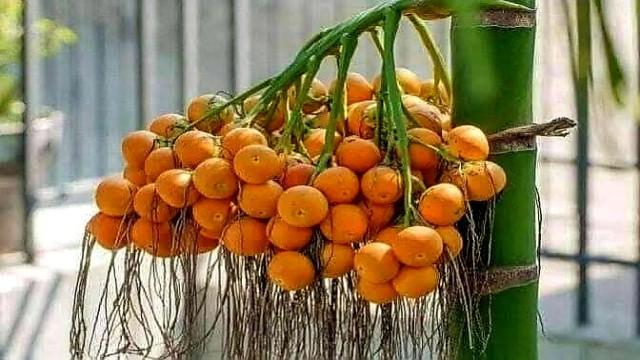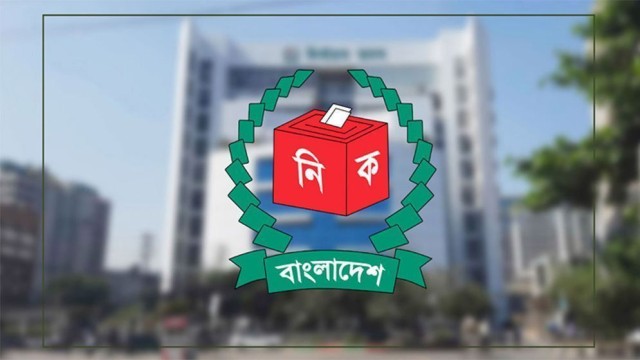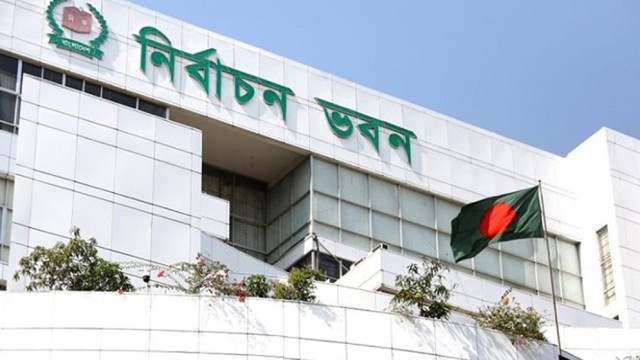Jhalokathi, Nov 15 (V7N) – Jhalokathi and neighbouring Kawkhali have long been among the country’s most prominent betel nut–producing regions, where a thriving commercial market has developed around this traditional cash crop. Dried betel nuts are sold from late February to early July, while ripe nuts dominate the market from late July to late November. Local traders purchase the nuts and supply them to wholesalers, who export shipments to India, Myanmar, Sri Lanka, Thailand and several Middle Eastern countries.
For generations, betel nut has been deeply rooted in Bengali culture—served to guests in rural homes and used in weddings. Today, the crop is not only a cultural symbol but also a vital pillar of the rural economy. In Jhalokathi, Pirojpur and other southern districts, nearly every homestead features multiple betel nut trees or small orchards.
Across Jhalokathi’s four upazilas, betel nut trees are spread across 471 villages. According to the Department of Agricultural Extension (DAE), approximately 751 hectares of land in the district have been planted with betel nut this season. Farmers report that favourable weather conditions have led to significantly higher yields compared to previous years. The region’s riverine soil, enriched by silt deposits, contributes to the consistently strong production.
Depending on size and quality, a batch of 210 ripe betel nuts—known locally as one kuri—is selling for Tk 350 to 500. Weekly markets in the four upazilas, along with 89 rural haats, see transactions worth Tk 5–6 crore during the peak season. Kawkhali’s bustling weekly market also records sales exceeding Tk 1 crore.
Farmers say that once planted, a betel nut tree begins producing fruit within four to five years and continues for up to 40 or 50 years. The trees require relatively little care, making betel nut cultivation increasingly attractive, especially with stable weather conditions. Both dried and ripe nuts are preserved through traditional methods, including drying, peeling, storing in sacks or soaking in sealed water tanks.
Dried betel nuts are sold by weight, while fresh nuts are sold through a traditional system of counting. Ten nuts make one ghaa, and 21 ghaa—210 nuts—make one kuri. Beyond consumption, dried betel nut husk is used as fuel, and modern processing techniques allow the shells to be transformed into single-use plates, dishes and trays.
Wholesalers travelling from Chattogram report strong demand. Trader Gias Uddin noted that betel nuts from Jhalokathi and Kawkhali are larger and of higher quality than in other regions, making them suitable for export. Asim Kondu, a wholesaler from Kawkhali, and Kabir Hossain of Rajon Traders said they purchase nuts from local suppliers and export mainly to India and Myanmar, where high quality ensures strong demand.
Daily transactions across the district’s markets often exceed Tk 1 crore during the peak season, benefiting farmers, wholesalers, workers, transport operators and local businesses.
DAE Deputy Director Abdullah Al Mamun said the government aims to transform betel nut from an agricultural product into a competitive export brand. “We are encouraging farmers to adopt planned and improved cultivation so the crop becomes more export-ready. Betel nut is now emerging as a promising agro-based industry,” he added.
END/AIJ/SMA/






























Comment: